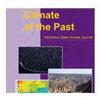Simulated ocean oxygenation during the interglacials MIS 5e and MIS 9e
IF 3.2
2区 地球科学
Q1 GEOSCIENCES, MULTIDISCIPLINARY
引用次数: 0
Abstract
Abstract. Recent studies investigating future warming scenarios have shown that the ocean oxygen content will continue to decrease over the coming century due to ocean warming and changes in oceanic circulation. However, significant uncertainties remain regarding the magnitude and patterns of future ocean deoxygenation. Here, we simulate ocean oxygenation with the ACCESS ESM1.5 model during two past interglacials that were warmer than the preindustrial climate, the Last Interglacial (Marine Isotope Stage (MIS) 5e, ~ 129–115 ka) and MIS 9e (~ 336–321 ka). While orbital parameters were similar during MIS 5e and MIS 9e, with lower precession, higher eccentricity and higher obliquity than pre-industrial, greenhouse gas radiative forcing was highest during MIS 9e. We find that the global ocean is overall less oxygenated in the MIS 5e and MIS 9e simulations compared to the preindustrial control run and that oxygen concentrations are more sensitive to changes in the distribution of incoming solar radiation than to differences in greenhouse gas concentrations. Large regions in the Mediterranean Sea are hypoxic in the MIS 5e simulation, and to a lesser extent in the MIS 9e simulation, due to an intensification and expansion of the African Monsoon, enhanced river run-off and resulting freshening of surface waters and stratification. Upwelling zones off the coast of North America and North Africa are weaker in both simulations compared to the preindustrial control run, leading to less primary productivity and export production. Antarctic Bottom Water is less oxygenated, while North Atlantic Deep Water and the North Pacific Ocean at intermediate depths are higher in oxygen content. All changes in oxygen concentrations are primarily caused by changes in ocean circulation and export production and secondarily by changes in temperature and solubility.MIS 5e 和 MIS 9e 间冰期的模拟海洋含氧量
摘要最近对未来变暖情景的调查研究表明,由于海洋变暖和大洋环流的变化,海洋含氧量在下个世纪将继续下降。然而,未来海洋脱氧的程度和模式仍存在很大的不确定性。在此,我们利用 ACCESS ESM1.5 模型模拟了过去两个比工业化前气候更温暖的间冰期(末次间冰期(海洋同位素阶段(MIS)5e,约 129-115 ka)和 MIS 9e(约 336-321 ka)期间的海洋含氧量。虽然 MIS 5e 和 MIS 9e 期间的轨道参数相似,与工业化前相比,前向度更低、偏心率更高、倾角更大,但 MIS 9e 期间的温室气体辐射强迫最大。我们发现,与工业化前的对照运行相比,在 MIS 5e 和 MIS 9e 模拟中,全球海洋的含氧量总体较低,氧气浓度对太阳辐射入射分布的变化比对温室气体浓度的差异更为敏感。在 MIS 5e 模拟中,地中海大面积缺氧,在 MIS 9e 模拟中缺氧程度较轻,原因是非洲季风增强并扩大,河流径流增强,导致表层水变清和分层。与工业化前的对照运行相比,两种模拟中北美和北非沿岸的上升流区都较弱,导致初级生产力和出口生产减少。南极底层海水含氧量较低,而北大西洋深层海水和北太平洋中层海水含氧量较高。氧气浓度的所有变化主要是由海洋环流和出口生产的变化引起的,其次是由温度和溶解度的变化引起的。
本文章由计算机程序翻译,如有差异,请以英文原文为准。
求助全文
约1分钟内获得全文
求助全文
来源期刊

Climate of The Past
地学-气象与大气科学
CiteScore
7.40
自引率
14.00%
发文量
120
审稿时长
4-8 weeks
期刊介绍:
Climate of the Past (CP) is a not-for-profit international scientific journal dedicated to the publication and discussion of research articles, short communications, and review papers on the climate history of the Earth. CP covers all temporal scales of climate change and variability, from geological time through to multidecadal studies of the last century. Studies focusing mainly on present and future climate are not within scope.
The main subject areas are the following:
reconstructions of past climate based on instrumental and historical data as well as proxy data from marine and terrestrial (including ice) archives;
development and validation of new proxies, improvements of the precision and accuracy of proxy data;
theoretical and empirical studies of processes in and feedback mechanisms between all climate system components in relation to past climate change on all space scales and timescales;
simulation of past climate and model-based interpretation of palaeoclimate data for a better understanding of present and future climate variability and climate change.
 求助内容:
求助内容: 应助结果提醒方式:
应助结果提醒方式:


